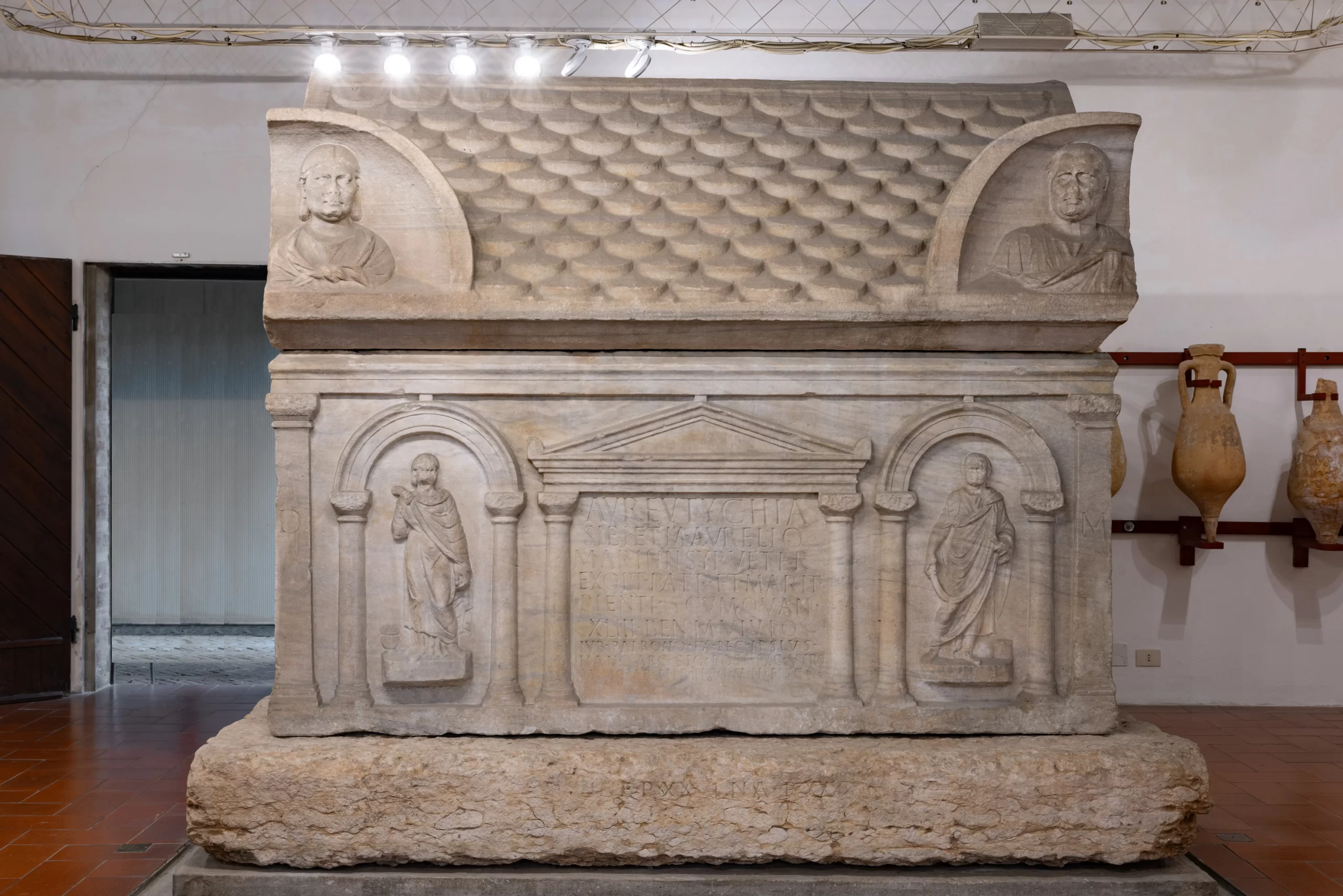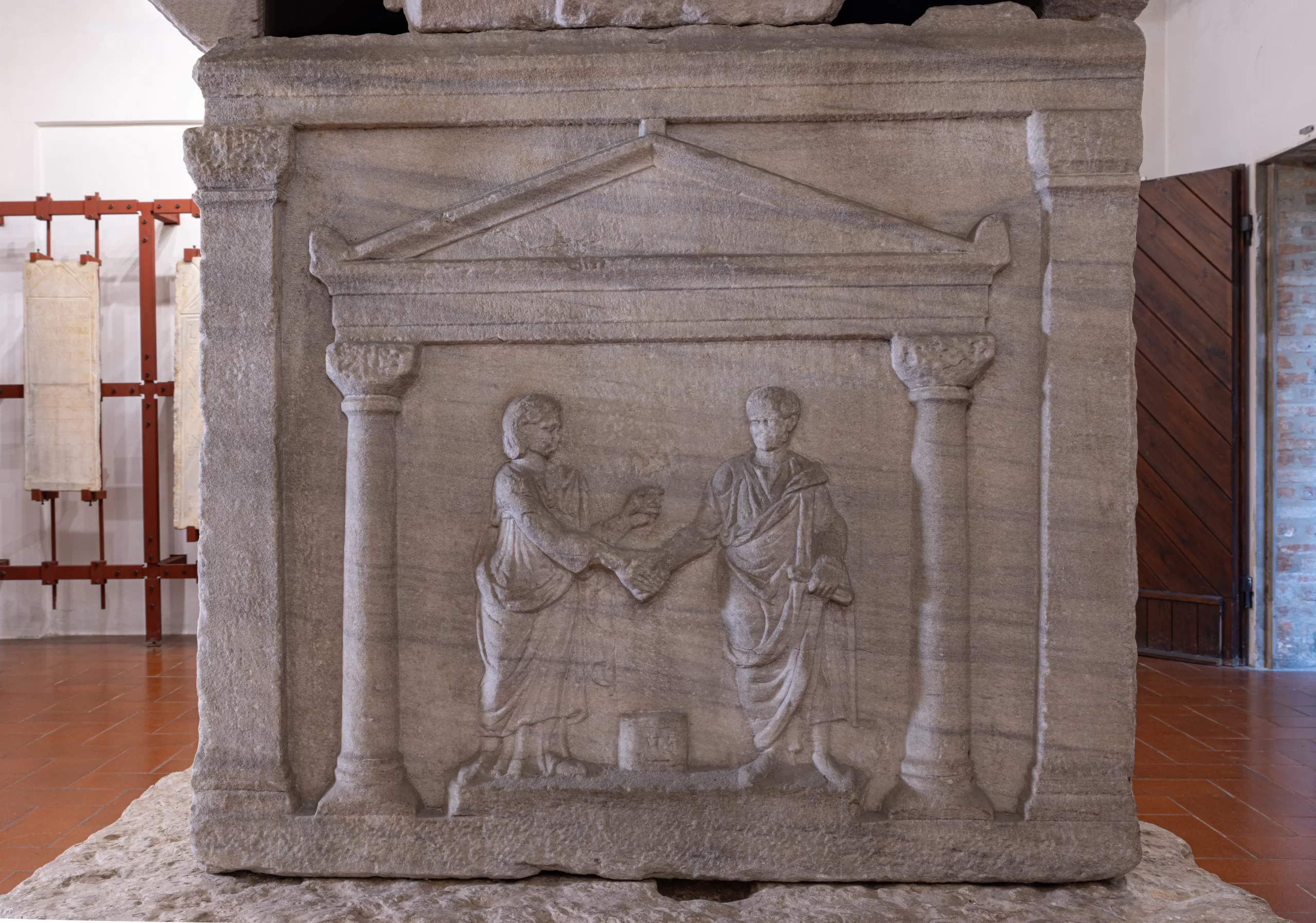Home/Museums/Museo Lapidario
Museo Lapidario
Epigraphs, tombstones and funerary monuments dating back to Roman and medieval times offer a glimpse of local history and testify to the social, religious and political life of Ancient Ferrara.
HOURS
10 a.m. to 7 p.m. Tuesday to Sunday
Closed on Mondays
Last entry 30 minutes before closing
The Lapidarium can be visited with the ticket of the Museo Schifanoia
The church of Santa Libera, the current site of the Lapidarium, was erected opposite Palazzo Schifanoia by Antonio Angelici in the 15th century for the Augustinian friars of the adjoining convent of Sant’Andrea. Used until 1596 as an oratory, it was then sold to the Guild of Masons, which provided for its restoration and embellishment. After the French invasion of 1796 the church was put to improper uses, becoming a warehouse, stable, workshop and finally a metallurgical workshop until 1979, when the municipal administration ordered its recovery and restoration to be used as Museo Lapidario.
The latter was established in 1735 by Marquis Ercole Bevilacqua, who donated a locally sourced Roman stele to the city to celebrate his re-election as Giudice dei Savi. The formation of the collection was accomplished between the eighteenth and early nineteenth centuries, with donations from Ferrara scholars and erudites, such as Girolamo Baruffaldi and Giuseppe Antenore Scalabrini, and was enriched by new archaeological discoveries and campaigns of detachments of the marbles reused in churches and monuments in and around the city.
Today, the Lapidarium preserves materials of different origins that constitute the main documentation of the Roman peopling of the Po Delta territory. It is mainly characterized by products of funerary handicrafts including stelae, cippi and sarcophagi, in which stylistic influences from the Veneto and Ravenna can be recognized. Of particular note among the stone materials is the stele of the physician Pupius (1st cent. AD), a freedman in charge of the emperor’s cult, and the large sarcophagus of the Aurelii (3rd cent. AD) found in 1713 in the archaeological area of Voghenza.
THE BUILDING.
Home to the preservation and display of the epigraphic collection of the Museums of Ancient Art of Ferrara is the church of Santa Libera. Built between 1470 and 1474, the church housed an important image of the Virgin with Saint Libera considered by the people to be miraculous and originally placed on the garden wall of the now defunct convent of St. Andrew. Deconsecrated in 1796, the building was restored in 1979 to become home to Museo Lapidario.
VISIT
The Lapidarium can be visited with a ticket from Museo Schifanoia. More information on hours, fees, and how to visit.
ACCESSIBILITY
The museum is partially accessible (due to the presence of steps and uneven outdoor pavement)
NOT TO BE MISSED
HOW TO GET THERE.
Civic Lapidary, 1 Camposabbionario Street, 44121 Ferrara
BY CAR
A13 BO-PD
Ferrara Sud exit, direction center, San Giorgio area continue toward Viale Alfonso d’Este; Ferrara Nord exit, direction center, Corso Porta Mare, turn right onto Rampari di San Rocco continue on Viale Alfonso d’Este
BY TRAIN
BY BUS.
From the train station and Castello Estense bus No. 1 and No. 9: recommended stop San Rocco Medaglie d’oro (about 600 meters) or bus No. 6 : recommended stop Alfonso d’Este Medaglie d’oro (about 300 meters)
PARKING
San Rocco’s Ramparts for a fee or free nearby








